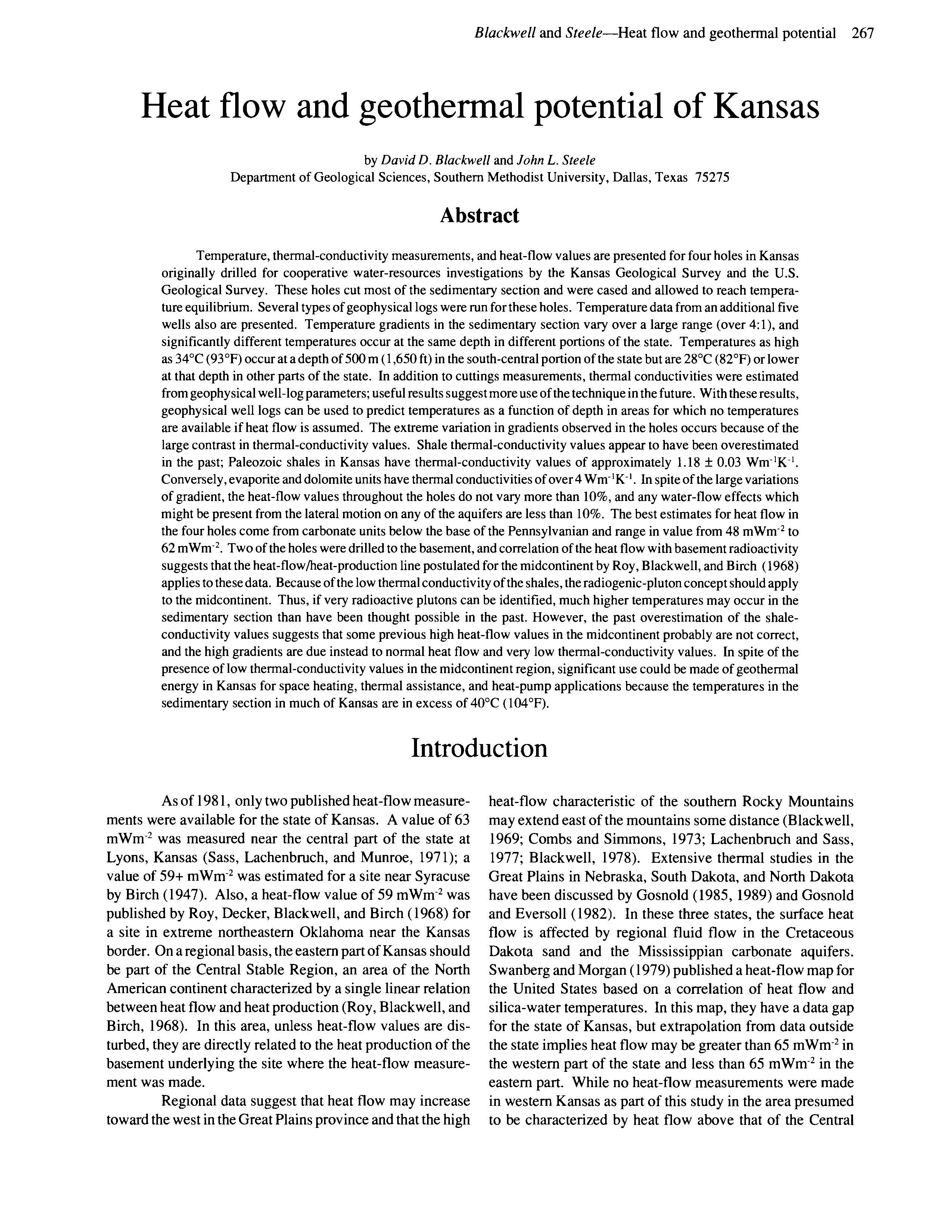Heat flow and geothermal potential of Kansas
DOI:
https://doi.org/10.17161/kgsbulletin.no.226.20508Abstract
Temperature, thermal-conductivity measurements, and heat-flow values are presented for four holes in Kansas originally drilled for cooperative water-resources investigations by the Kansas Geological Survey and the U.S. Geological Survey. These holes cut most of the sedimentary section and were cased and allowed to reach temperature equilibrium. Several types of geophysical logs were run for these holes. Temperature data from an additional five wells also are presented. Temperature gradients in the sedimentary section vary over a large range (over 4:1), and significantly different temperatures occur at the same depth in different portions of the state. Temperatures as high as 34°C (93°F) occur at a depth of 500 m (1,650 ft) in the south-central portion of the state but are 28°C (82°F) or lower at that depth in other parts of the state. In addition to cuttings measurements, thermal conductivities were estimated from geophysical well-log parameters; useful results suggest more use of the technique in the future. With these results, geophysical well logs can be used to predict temperatures as a function of depth in areas for which no temperatures are available if heat flow is assumed. The extreme variation in gradients observed in the holes occurs because of the large contrast in thermal-conductivity values. Shale thermal-conductivity values appear to have been overestimated in the past; Paleozoic shales in Kansas have thermal-conductivity values of approximately 1.18 ± 0.03 Wm-1K-1. Conversely, evaporite and dolomite units have thermal conductivities of over 4 Wm-1K-1. In spite of the large variations of gradient, the heat-flow values throughout the holes do not vary more than 10%, and any water-flow effects which might be present from the lateral motion on any of the aquifers are less than 10%. The best estimates for heat flow in the four holes come from carbonate units below the base of the Pennsylvanian and range in value from 48 mWm-2 to 62 mWm-2. Two of the holes were drilled to the basement, and correlation of the heat flow with basement radioactivity suggests that the heat-flow/heat-production line postulated for the midcontinent by Roy, Blackwell, and Birch (1968) applies to these data. Because of the low thermal conductivity of the shales, the radiogenic-pluton concept should apply to the midcontinent. Thus, if very radioactive plutons can be identified, much higher temperatures may occur in the sedimentary section than have been thought possible in the past. However, the past overestimation of the shale-conductivity values suggests that some previous high heat-flow values in the midcontinent probably are not correct, and the high gradients are due instead to normal heat flow and very low thermal-conductivity values. In spite of the presence of-low thermal-conductivity values in the midcontinent region, significant use could be made of geothermal energy in Kansas for space heating, thermal assistance, and heat-pump applications because the temperatures in the sedimentary section in much of Kansas are in excess of 40°C (104°F).
Downloads

